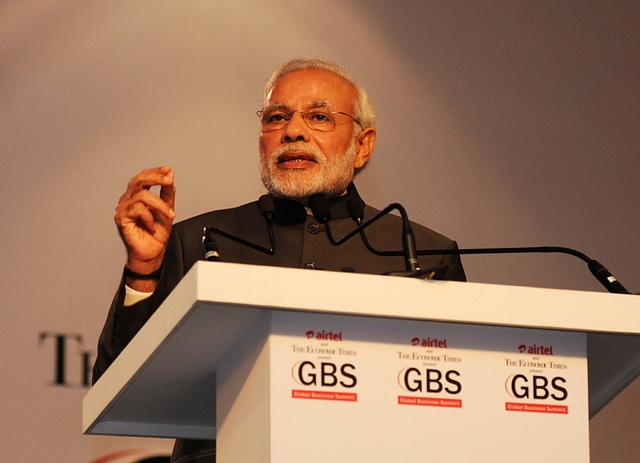
Debunking The Western Media’s Anti-Modi Propaganda
The Western media bases its criticism of Modi on his participation in the RSS, but fails to recognize basic facts about the RSS.
Modi is often painted as the villain of the 2002 Godhra riots, but the then Chief Minister in fact took several steps to curb the massacre.
By Kushagr Sharma
Prime Minister Narendra Modi has come under much fire in the Western media for his political background. “India’s prime minister is a Hindu extremist,” said The Guardian last year. “Growing Hindu Extremism in India under Modi’s Administration,” screamed another headline in the British media.
But to what extent is Modi an extremist and why does this perception exist? When Western journalists try to define Modi as an extremist, they generally start with the Rashtriya Swayamsevak Sangh (RSS). Modi has been apart of the RSS from his early days in public life, rising from a Swayamsevak to a full-time Pracharak. The Western media often portrays Modi’s participation in the RSS as a sign of why he is a modern day ‘Hitler’.
In 2012, the International Business Times accused the RSS of “openly militant Hindu activism and the suppression of minorities in India.” Many academics and intellectuals, including the noted historian Irfan Habib, have gone much further by comparing the RSS to the Islamic State (ISIS).
However, statements such as these betray ignorance of even the very basic principles of the RSS. The RSS has been accused time and again of orchestrating attacks. But in the past 90 years, not one member of the organization has been convicted of such a crime. In the State of Madhya Pradesh v Ramshanker Raghuvanshi case of 1983, the Supreme Court ruled that a citizen cannot be discriminated by his/her affiliations to the RSS. Later, in 1995, the Supreme Court ruled that ‘Hindutva’ is a secular way of life.
The RSS is also often accused of suppressing India’s minorities. But in fact, several members of minority communities take active part in the RSS. The RSS has affiliated organizations such as the Muslim Rashtriya Manch, the Rashtriya Sikh Sangat and other wings which ensure active participation of minorities.
Habib’s comparison of the RSS to ISIS can also be similarly countered. In just 2 years after separating from Al-Qaeda, ISIS has caused mayhem across the world from France to Nigeria and Pakistan. By contrast, the RSS has spent 90 years in peaceful activities. Habib and other critics must realize that if the RSS did want to destroy schools, massacre people and destroy historical artefacts, they would not have taken 90 years to get started. With a membership of nearly 10 million, this goal could literally be accomplished overnight.
The Western media also attacks Modi by labeling him a ‘mass murder’. In particular, observers point at Modi as the culprit of the 2002 Gujarat riots. In order to understand these riots, it is important to understand the history of Gujarat. From way back in 1714 to 2002, Gujarat had seen communal violence erupt many times. In its coverage of the tragedy, Outlook noted, “Gujarat has always been a communal tinderbox and even a small spark ignites big trouble”. In 2002, tensions were already high after 59 karsevaks were burned alive in Godhra.
When the riots began, the police force was found wanting. Police in Ahmedabad have a force of 6000 personnel. However, they were no match for the estimated 25000 rioters who were looking to kill Muslims at sight. On occasions, the rioters in fact had better weapons than the police.
But what did Modi do? On being informed about the initial incident, Modi set off for Godhra at once. He also immediately announced an indefinite curfew in Godhra and a shoot-at-sight order. Within just 24 hours, everything had come to a halt and there was peace yet again. In the aftermath, there were a total of 249 convictions in 19 cases for the riot. As a result, Gujarat has been quite peaceful for the last 14 years, while states such as Uttar Pradesh continue to witness intermittent communal disharmony.
The main proponents of anti-Modi and anti-India propaganda in the West are left-wing outlets such as The Guardian, The Independent and The New York Times. This is not in the least bit surprising. As the great American conservative William Buckley once said, “Liberals claim to want to give a hearing to other views, but then are shocked and offended to discover that there are other views.”
The end of this year will mark the halfway point of the Modi government. The Prime Minister has not said or done anything so far that has threatened to disrupt communal harmony. While it is entirely acceptable to criticize the Prime Minister in a democracy, such criticism has to be grounded in fact rather than bias.